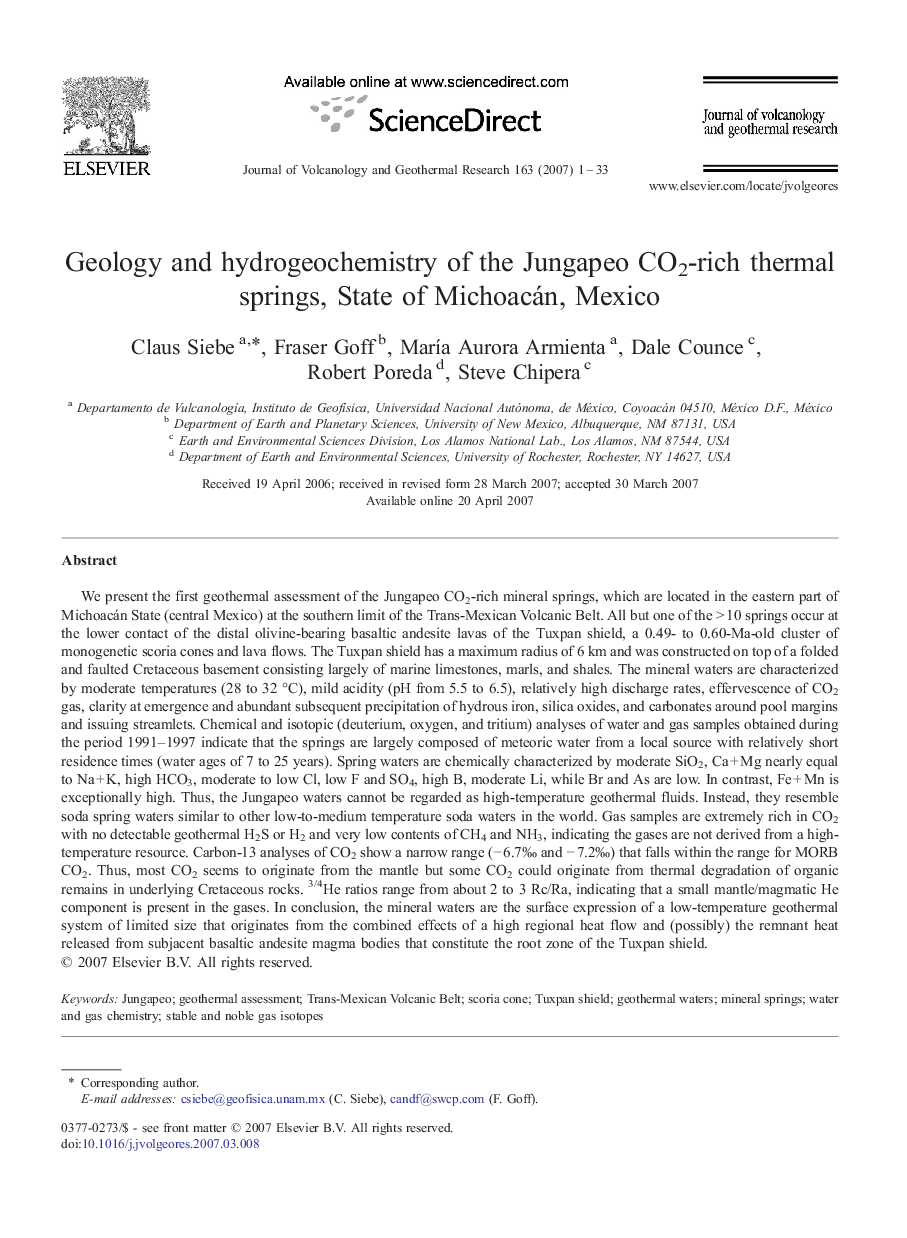| کد مقاله | کد نشریه | سال انتشار | مقاله انگلیسی | نسخه تمام متن |
|---|---|---|---|---|
| 4715319 | 1638463 | 2007 | 33 صفحه PDF | دانلود رایگان |

We present the first geothermal assessment of the Jungapeo CO2-rich mineral springs, which are located in the eastern part of Michoacán State (central Mexico) at the southern limit of the Trans-Mexican Volcanic Belt. All but one of the > 10 springs occur at the lower contact of the distal olivine-bearing basaltic andesite lavas of the Tuxpan shield, a 0.49- to 0.60-Ma-old cluster of monogenetic scoria cones and lava flows. The Tuxpan shield has a maximum radius of 6 km and was constructed on top of a folded and faulted Cretaceous basement consisting largely of marine limestones, marls, and shales. The mineral waters are characterized by moderate temperatures (28 to 32 °C), mild acidity (pH from 5.5 to 6.5), relatively high discharge rates, effervescence of CO2 gas, clarity at emergence and abundant subsequent precipitation of hydrous iron, silica oxides, and carbonates around pool margins and issuing streamlets. Chemical and isotopic (deuterium, oxygen, and tritium) analyses of water and gas samples obtained during the period 1991–1997 indicate that the springs are largely composed of meteoric water from a local source with relatively short residence times (water ages of 7 to 25 years). Spring waters are chemically characterized by moderate SiO2, Ca + Mg nearly equal to Na + K, high HCO3, moderate to low Cl, low F and SO4, high B, moderate Li, while Br and As are low. In contrast, Fe + Mn is exceptionally high. Thus, the Jungapeo waters cannot be regarded as high-temperature geothermal fluids. Instead, they resemble soda spring waters similar to other low-to-medium temperature soda waters in the world. Gas samples are extremely rich in CO2 with no detectable geothermal H2S or H2 and very low contents of CH4 and NH3, indicating the gases are not derived from a high-temperature resource. Carbon-13 analyses of CO2 show a narrow range (− 6.7‰ and − 7.2‰) that falls within the range for MORB CO2. Thus, most CO2 seems to originate from the mantle but some CO2 could originate from thermal degradation of organic remains in underlying Cretaceous rocks. 3/4He ratios range from about 2 to 3 Rc/Ra, indicating that a small mantle/magmatic He component is present in the gases. In conclusion, the mineral waters are the surface expression of a low-temperature geothermal system of limited size that originates from the combined effects of a high regional heat flow and (possibly) the remnant heat released from subjacent basaltic andesite magma bodies that constitute the root zone of the Tuxpan shield.
Journal: Journal of Volcanology and Geothermal Research - Volume 163, Issues 1–4, 1 June 2007, Pages 1–33